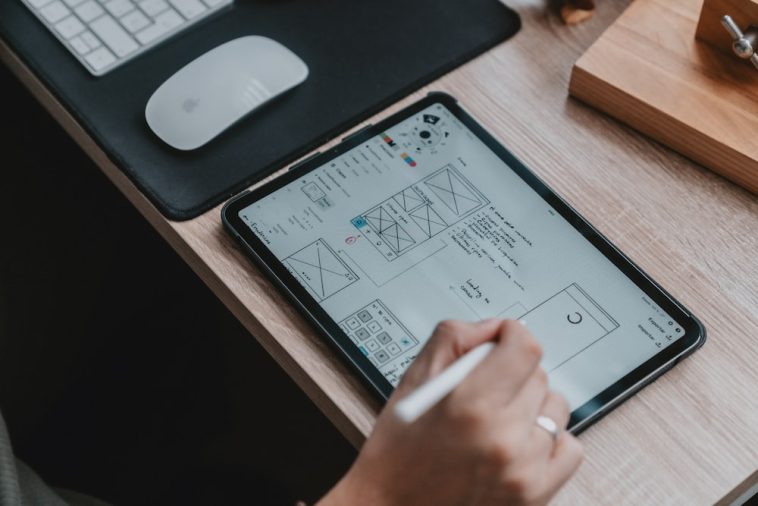Introduction.
Have you ever thought about becoming a freelance UX designer? It’s one of the most exciting career paths in the digital world right now, and for good reason. User experience design is crucial for the success of websites, apps, and other digital products.
Companies know how important it is to have someone who can design intuitive and user-friendly interfaces that meet the needs of their users.
As a freelance UX designer, you get the opportunity to work on exciting projects, set your own schedule, and, most importantly, be your own boss.
But like any freelance career, it’s not all sunshine and rainbows. It takes skill, persistence, and a little bit of know-how to build a successful freelance UX design career.
In this article, I’m going to break down exactly how you can become a freelance UX designer, how to find clients, and what it takes to succeed in this field.
Let’s jump right in!
What is UX Design?
Before we dive into the steps to becoming a freelance UX designer, let’s quickly talk about what UX design actually is. UX stands for User Experience, and it’s all about how a person feels when interacting with a product or service.
UX designers focus on making digital products (websites, apps, etc.) easy to use and enjoyable, which involves research, design, testing, and a lot of creativity.
If you’re someone who loves solving problems, creating clean and functional designs, and thinking about how users interact with technology, this might be the perfect field for you.
How Do I Become a Freelance UX Designer and Succeed?
Step 1: Build a Solid Foundation in UX Design
Before you can jump into freelancing, you need to have a solid understanding of UX design principles. You don’t need to be an expert right away, but there are a few things you should know:
- User Research: Understanding users and their needs is a huge part of UX design. This involves gathering data, conducting interviews, and surveys, and analyzing behaviours.
- Wireframing and Prototyping: You need to be able to sketch or create prototypes of your design ideas. Tools like Figma, Adobe XD, and Sketch are popular for this.
- Usability Testing: Once you have a design, you need to test it. Is it easy for users to navigate? Does it meet their needs? Testing helps you improve your design.
- Information Architecture: This is the process of organizing content in a way that makes sense to the user. It helps people find what they need quickly and easily.
There are plenty of free resources and courses online to help you learn these basics. Websites like Coursera, LinkedIn Learning, and even YouTube have tutorials for beginners. Additionally, many universities and online platforms offer UX boot camps that can give you hands-on experience.
Step 2: Build a Strong Portfolio
Once you have the basics down, it’s time to start building a portfolio. This is your chance to show off your skills and demonstrate your understanding of UX design. Your portfolio should include:
- Case Studies: For each project, show the process you followed, the problems you solved, and the results. Employers and clients want to see how you think and approach challenges.
- Diverse Projects: Include a variety of projects that highlight different aspects of UX design. This can include website redesigns, app designs, or even projects you’ve done as practice.
- Before and After: If possible, show the changes you made to a design and how those changes improved the user experience.
If you’re just starting out, you may need to take on personal projects, redesign existing websites, or do work for friends and family to build up your portfolio. This can be challenging, but trust me, it’s worth it in the long run.
Step 3: Start Networking and Building Your Brand
Now that you have the skills and a portfolio, it’s time to get out there and find work. Networking is crucial in the freelance world. The more people you know, the more likely you are to find clients. Here are some ways to get started:
- LinkedIn: Create a professional profile and start connecting with people in the UX and design industry. Make sure to showcase your portfolio here.
- Design Communities: There are plenty of online communities like Dribbble, Behance, and Reddit where designers share their work and connect with others.
- Attend UX Meetups and Conferences: These events are great for networking. You can meet potential clients or other designers who might refer you to someone who needs your services.
Another key to success is building your personal brand. Share your work on social media, write blog posts, or create content that shows off your design expertise. The more you put yourself out there, the more clients will notice you.
Step 4: Find Clients and Pitch Your Services
Freelance UX design often involves a lot of hustle in the beginning. To find clients, you’ll need to pitch your services. Here’s how to do that effectively:
- Cold Outreach: Find companies or startups that could benefit from your UX design skills and reach out to them directly. Personalize your message and show them how you can solve their design problems.
- Freelance Platforms: Websites like Upwork, Fiverr, and Freelancer are great places to find freelance gigs. You can start small and gradually work your way up to bigger projects.
- Referrals: Once you land a few clients, ask for referrals. Word of mouth is powerful in the freelance world.
When pitching your services, don’t just focus on your skills – focus on how you can solve the client’s problems. Clients want to know that you understand their needs and that you can help them improve their products. Keep your pitches short, clear, and focused on the value you can bring.
Step 5: Set Your Rates and Manage Your Finances
One of the tricky parts of freelancing is setting your rates. As a beginner, you might feel unsure about how much to charge. But keep in mind that your rates should reflect your experience, skills, and the value you bring to the client.
Research what other freelance UX designers are charging in your area or field. Generally, rates can range from $30 to $100+ per hour, depending on your experience and location. As you gain more experience, you can raise your rates.
You also need to stay on top of your finances. Keep track of your income and expenses, set aside money for taxes, and consider using invoicing software like FreshBooks or QuickBooks to keep everything organized.
Step 6: Keep Learning and Evolving
The world of UX design is always changing. New tools, trends, and technologies emerge all the time. To stay competitive, you’ll need to keep learning and evolving.
Join UX design communities, read blogs, take online courses, and always be open to feedback. The more you grow your skills, the more valuable you’ll be as a freelancer.
FAQs
Q: How long does it take to become a freelance UX designer?
It can take anywhere from a few months to a couple of years, depending on how much time you dedicate to learning, practicing, and building your portfolio. The more effort you put in, the quicker you’ll see results.
Q: Do I need to be a full-time UX designer to start freelancing?
No, you don’t. Many freelancers start out doing UX design part-time while still working at a full-time job. As you build your client base, you can transition to freelancing full-time.
Q: How do I deal with difficult clients?
Difficult clients are part of the freelance world, but handling them professionally is key. Be clear about expectations upfront, communicate regularly, and stay calm if issues arise.
Conclusion
Becoming a freelance UX designer can be incredibly rewarding. The freedom to work on diverse projects, set your own schedule and make a good income is worth the effort.
But to succeed, you need to put in the work. From learning the basics of UX design to building a portfolio, finding clients, and managing your business, it all takes time and dedication.
But the real question is: are you ready to take the leap into the world of freelance UX design and make your mark?




GIPHY App Key not set. Please check settings